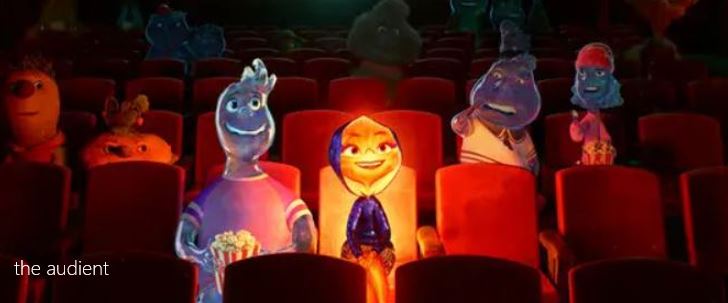On Friday night, I revisited what easily could have been a third.
Paul Thomas Anderson is also not very prolific, sometimes making us wait a Kaufmanian five years between projects, and like Kaufman, he has established his own signature style. While the content of his films changes from outing to outing, he has a proclivity for epics painted on big canvases. These are as likely to have big casts (Boogie Nights, Magnolia) as smaller ones (There Will Be Blood, Phantom Thread), but they have been without exception feasts for the eyes with long running times and a distinct sense of the grandiose.
Well, almost without exception.
The 96-minute Punch-Drunk Love, released in the aforementioned 2002, broke the mold Anderson had recently established with Boogie Nights and Magnolia. Or, you could characterize it as a return to the more intimate character drama he started out with, Hard Eight. But Punch-Drunk was quirky enough, especially next to the comparatively straightforward Hard Eight, that it clearly feels like its own distinct thing.
And kind of like a Kaufman thing, which I'm "thinking about" this year.
Adam Sandler's Barry Egan is a Kaufman protagonist if ever there was one. He's socially awkward almost to the point of pathology. He particularly doesn't know how to behave around women, despite growing up with seven sisters -- he doesn't know how to behave around women who are romantic prospects, anyway. In fact, except for the fact that this is a romantic fantasy, his behavior would certainly be interpreted by most women as that of a stalker, as he's flown to Hawaii just to meet up with Emily Watson's Lena Leonard -- even though they both live in the same city. His scheme to exploit the inefficiencies of a Healthy Choice frequent flier miles promotion is just the kind of obsessive task that would occupy a Kaufman protagonist, and most Kaufman protagonists have an anger bubbling beneath the surface, even if they don't act on it the way Barry does.
It's not just the oddball themes and design of Punch-Drunk Love that feel reminiscent of Kaufman, but also the casting choices -- even if only in retrospect. See, Kaufman worked with two of the stars of this movie, even if Anderson got to them first. Philip Seymour Hoffman and Emily Watson would both appear in Synecdoche, New York, still six years on the horizon at this point. Of course, this was already the fourth time Hoffman and Anderson had worked together. So should we say that maybe Kaufman made an Anderson movie with Synecdoche? Probably not, though we can leave these chicken-or-egg debates to the philosophers.
In regards to who imitated who, though, this does remind us of a criticism that dogged Anderson in his early days. Before Anderson's genius paved its way into a style that was not directly indebted to any other auteur, he was thought to be making homages to his favorite directors. It was easy to see Scorsese in Boogie Nights, Altman in Magnolia. PTA's fourth feature had always felt like something wholly original that was not in direct conversation with any other director's work, but now I'm starting to wonder.
However, in making these types of determinations, it is again important to remember the chronology here. When Punch-Drunk Love debuted at Cannes in May of 2002, there were only two Kaufman films in the world: Being John Malkovich and Human Nature. PDL is not a close thematic match to either of those films, so I think we can really only see this as a Kaufman-style film in retrospect. In fact, if PTA had continued in this vein rather than making There Will Be Blood, he and Kaufman might have ended up with equal claim to making "Charlie Kaufman films."


No comments:
Post a Comment